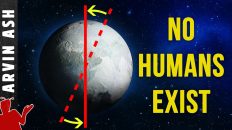Dreams, explained
If it wasn’t for dreams, we may not have gotten things like the Double Helix structure of DNA by James Watson, the song “yesterday” by the Beatles, or the book Frankenstein by Mary Shelley. All these were products of dreams by their authors.
For thousands of years dreams had been considered mystical, or a kind of window into the future, or insight about the past.
Ancient Egyptians believed that dreams were like oracles, bringing messages from the gods.
In ancient China and India, people believed that the soul was freed from the body during sleep and was roaming or guided until you awakened.
But what does modern science have to say about this? Do our dreams really have any purpose, do they mean something? Why do we dream in the first place?
A hundred years ago, it was commonly believed that we did not dream during sleep, but rather just before we woke up. Even if the timeline within our dream was hours, everything happened between the few minutes between the time we were almost awake to the time we became fully awake. Today, we know that is not the case. We know for sure now that we dream while we are asleep. So let’s look at what happens in our brain during the process of sleeping.
Sleep can be divided broadly into two categories rapid eye movement or REM sleep, and non-REM sleep. When you fall asleep, non-REM occurs first, then you fall into an REM sleep.
Deep sleep actually appears to occur in non-REM sleep, after a transition period. Just before we fall asleep, our brain is a mess of chattering electrons with chaotic electrical waves before we transition to non-REM where brain activity decreases. This is known as slow-wave sleep. During this time, you body temperature and heart rate fall, and the brain uses less energy.
About 90 minutes later, however, we go into REM sleep where our brain activity picks up again, and is very similar to when we are awake. Although this is a smaller portion of total sleep, only about 20-25%, or a total of about 2 hours, this is when dreams or nightmares happen. Unlike non-REM, It is associated with fast brain waves, eye movements, and loss of muscle tone.
During REM sleep, the brain is telling the body to move, and start doing stuff, just as if you were awake, but a tiny area of the brain called the pons, causes the body to be paralyzed. The only thing that is not paralyzed is your eyes. That’s why you have rapid eye movement during this period.
In people that have a disorder of the pons, sleeping can be very dangerous because they can hurt themselves by moving around while not conscious, or sleepwalking.
But thankfully, for most people, only their eyes act out their dreams.
But what is the purpose of dreams?
One purpose appears to be to restore the brain’s energy. The brain requires a lot of energy to function when you are awake. Although it weighs less than 3% of the body, it uses up 20% of the body’s energy when awake. But the brain uses significantly less energy while sleeping than when awake. This allows the brain to build up its supply of energy, in the form of the molecule ATP or Adenosine triphosphate.
But what is the meaning of dreams?
Sigmund Freud, the father of psychoanalysis, published his famous book “The interpretation of Dreams” in 1899. He explained dreams as manifestations of a person’s innermost desires or repressed childhood memories. He believed that almost all dreams held some kind of sexual meaning.
For example climbing stairs represents having sex. Swords, sticks, balloons and reptiles, he believed represented the penis. Suitcases and chapels represent the vagina. Tearing branches off trees was masturbation.
This was the prevailing theory for much of the 20th century. But the theory that symbols in dreams have meaning is rejected by most scientists today, and much of Freud’s theory has been discredited.
———————————
So if Freud was wrong, then what do dreams mean?
There are a few characteristics that all dreams seem to have in common.
1) We usually cannot remember them
2) When we do remember them, they do not seem to make sense
3) They seem to trigger some of our deepest emotions
4) They seem profound
Can these characteristics of dreams be explained by science? To a large extent they can.
During REM sleep, the part of brain involved in logic and reason, called the prefrontal cortex is turned off, but the emotional part of the brain, located in the hippocampus and amygdala are very active, more active than when we are awake.
So, this has two effects, since our reasoning ability is not really working, dreams don’t make sense, but everything that we dream about triggers our emotions because that part of our brain is super active.
Another physiological effect that occurs is the levels of norepinephrine decreases in the body. This is the fight or flight hormone, a chemical that keeps us alert and on our toes. It understandably goes way down during sleep. But this chemical is also involved in helping us form memories. So, because it is way down during sleep, our ability to form memories is reduced. This is why we can’t remember dreams.
And finally, the levels of another brain chemical called serotonin, which helps brain cells communicate with each other is decreased. According to neuroscientist, Dr. Robert Stickgold, this lowered level of serotonin biases the brain to think that whatever it is experiencing is important. So when we wake up, we think that whatever we dreamed about was somehow profound or holds a bigger meaning than it probably does.
This feeling of the profoundness of dreams is prevalent throughout the world in nearly every culture not only today, but also can be traced back throughout our history going back thousands of years. The culprit appears to be serotonin, or the lack of it.
So if this profoundness is an illusion created by the chemical activity in the brain during our sleep process, then why do we dream? What is the purpose of dreams?
The question of whether dreams actually have a biological or psychological function has not been definitively answered.
But a lot of research has been done in this area, and there is some evidence for what the answer could be.
One widely held theory is that the purpose of dreams is to help you store and build important memories, and also get rid of or delete unimportant memories. This is similar to defragmenting the hard drive on your computer.
Your brain gets thousands, and maybe millions of sensory inputs daily. Biologically, some of these may be important to your survival, but most are unimportant. During sleep, it is theorized that your brain sorts through these inputs of the day, and figures out what to keep in long term memory, and what to delete.
So REM appears important for remembering as well as forgetting.
And experimental evidence seems to support this because for example people with traumatic memories can cope better if they get more REM sleep.
It has also been shown, that when people are learning new skills like learning a new language, dreams increase while they go to sleep.
But if dreams are just a way to defragment the hard drive our brains, why do some people have some of their most creative thoughts, like the structure of DNA or songs like Yeterday, through their dreams?
Scientists have proposed that during sleep, biologically our brains are not required to focus on survival activities. From an evolutionary perspective, our brain functions are biased to keep us alive, to focus on things that help us eat and avoid predators and danger. This bias is reduced or gone during sleep.
Researchers have found that during REM sleep, our minds, with the burden of survival being turned off, and the logic portion of our brain, in the prefrontal cortex turned off, we can freely associate ideas and thoughts and perhaps try out different combinations without the constraints of logic or survival bias in our brain.
This can allow some of the wildest and creative ideas, that would not usually happen during waking hours, to happen. It can also allow us to see solutions to problems we might not consciously or logically see while awake.
So if you’re stuck on something, or have writer’s block, try getting more sleep.
But there is also a theory that dreams don’t serve any function at all. Owen Flanagan, Professor of Philosophy at Duke University, thinks that the brain is just firing certain sets of neurons randomly. And dreaming is just our brain vaguely trying to make sense of it all.
Could it be that it is all really just meaningless?
From a Darwinian perspective, our mental tendencies usually have some evolutionary purpose. Dreams must have fulfilled some biological requirement that gave us some benefit for natural selection, otherwise, we probably would not have retained this function.
According to Antti Revonsuo, Professor at the University of Turku in Finland, dreams prepare humans for recognizing and avoiding danger by presenting a simulation of threating events. This is called the threat-simulation theory.
And according to a 2012 paper written by Ioannis Tsoukalas, PhD student at Stockholm University, REM sleep and dreaming is evolved out of a primordial defense reflex called tonic immobility. This is survival by playing possum, that is, feigning death. Predators usually don’t attack animals that they think are dead. This is common in vertebrates and invertebrates. Tsoukalas thinks REM and dreaming evolved from this evolutionary mechanism.
Although there doesn’t seem to be any evidence that the content of our dreams have any profound meaning, the biological purpose appears to be more clear cut. Dreams help the brain function better, and probably give us advantages in terms of creativity, problem solving and danger avoidance.
That being said, one 2009 study found that 56% of Americans, 65% of South Koreans, and 74% of Indians believed that the content of their dreams provided them with meaningful insights about their lives, and were a window into their unconscious thoughts. So no matter what science has to say, dreams will probably continue to fascinate and hold special meanings for many people.







